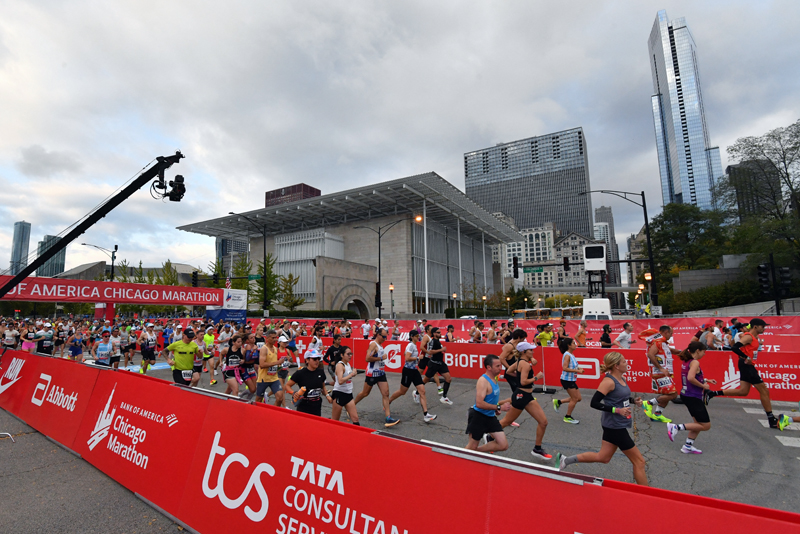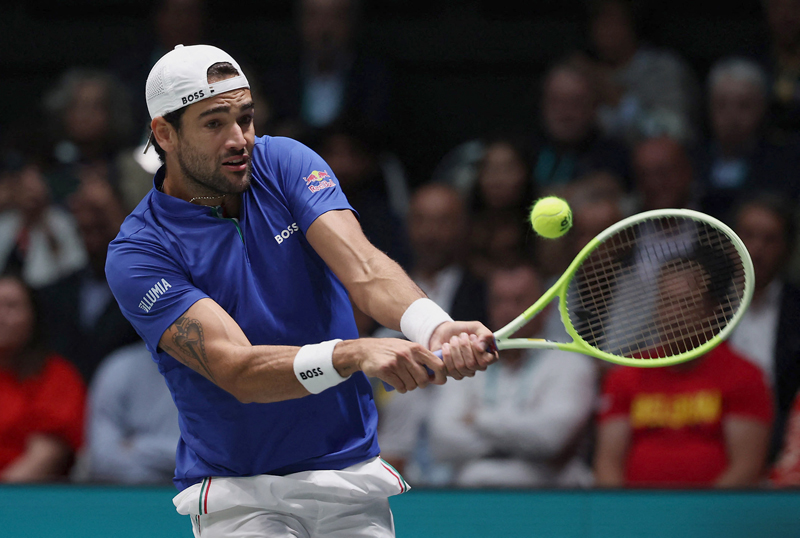- The differing types of strength are outlined and commonly used strength training systems identified;
- The role of training intensity in building muscle mass is discussed and the link between lactate production and generating intensity is explained;
- The relationship between building muscle mass and optimum % of 1-rep max training is discussed, together with training to failure and optimum inter-set rest.
Unless you’re a bodybuilder, ultimate muscle mass is far less important that the strength and power gains it can potentially bring. John Shepherd looks at the latest research, training theory and methods from a number of sports to determine the best ways to achieve maximum strength and power
It’s often thought that to develop maximum strength you need bigger muscles. To a degree this is true as bigger muscles can exert more force than smaller ones. However, athletes with the biggest muscles are not necessarily the strongest in terms of maximum lift ability. For example, a body builder may not be as strong as an Olympic or Power lifter, despite having larger muscles.
Body weight is also a crucial determining factor as the lightest athlete may actually be the most powerful/strongest in terms of their power-to-weight ratio. A 70kg athlete who can squat 190kg has a higher power-to-weight and strength ratio than a 90kg athlete whose best squat is 200kg.
To gain strength (and/or size) the weight training system employed must have a significant anabolic effect. This will stimulate increased muscle growth through the release of growth hormone and testosterone. These workouts also need to target fast-twitch muscle fibre.
Intensity rules?
A team of researchers from Finland investigated hormonal and neuromuscular responses and recovery in strength athletes versus non-athletes during heavy resistance exercise(1). Eight strength trained athletes and eight physically active but inexperienced athletes participated in the study. The 16 participants performed the ‘forced’ (FR) and ‘maximum’ (MR) repetitions training protocol – both of which are intense training systems. The MR protocol included 12 repetition maximum (12RM) squats for four sets with 2 minutes’ recovery in between sets. For the FR protocol, the initial load was higher than in MR so that the subject could lift approximately eight repetitions on their own plus four with assistance.Jargonbuster
- Weight training system
- The exact combination of loading (weight), repetitions, set numbers, exercise order and combinations of exercises
- Anabolic
- Hormonal response resulting in increased growth
- Growth hormone
- A key anabolic hormone whose levels are elevated by exercise
- Testosterone
- An anabolic male sex hormone (also found in women) again elevated after exercise
- Fast-twitch muscle fibre
- Muscle fibres that produce high-intensity contractions necessary for power and size increase
- Cortisol
- A hormone released from the adrenal gland that stimulates protein breakdown
- Blood lactate
- A by-product of intense exercise when carbohydrate is broken down for energy without sufficient oxygen, the accumulation of which causes fatigue
Before and after the lifting protocols blood samples were taken to determine testosterone, cortisol and growth hormone concentrations and blood lactate. The researchers also measured maximal voluntary isometric force and EMG activity of the leg extensor muscles (quadriceps) before and after the workouts and 24 and 48 hours later. It was discovered that the concentrations of the hormones measured increased significantly after both protocols. However, the responses tended to be higher in the FR group, compared to the MR group. The researchers concluded that this could indicate a greater potential for strength increase, due to the increased anabolic muscle building and strength increasing response.
The researchers also discovered that testosterone concentrations were significantly higher for both the FR and MR protocols in the strength trained athletes. This could be attributed to the fact that these athletes were better able physically and (perhaps more importantly) mentally recruiting greater amounts of muscle fibre. This led the researchers to conclude that,
‘… at least in experienced strength athletes, the forced-repetition protocol is a viable alternative to the more traditional maximum-repetition protocol and may even be a superior approach.’
So going ‘beyond the last rep/reps’ (with assistance) seems to offer greater maximum strength gain potential.
Lactate release and intensity
Many bodybuilders believe that workouts producing higher levels of lactate will stimulate a greater anabolic response. One bodybuilding weight training system currently in vogue involves 10 sets of 10 repetitions with a 2-minutes’ recovery between sets, with the weight at 80% of 1RM. These workouts work different body parts over four sessions a week, using a split-routine methodology.During the workout, the first four sets are performed as quickly as possible, but with adherence to correct form. This workout is particularly interesting as it combines medium to heavy weights with 100 repetitions per body part, which would – if the loadings were lighter – develop strength-endurance. However, this workout is designed to produce strength with bulk – hence the addition to the traditional strength types in table 1, ‘size with strength’.
Table 1: Different strength types and how to train for them
| Strength type | Primary purpose | Most commonly used weight training system | Common sports applications |
|---|---|---|---|
| Strength endurance | To develop muscles’ ability to produce repeated contractions under conditions of fatigue | High reps, 15 plus with light loadings, 30-50% 1RM and short recoveries | Field sports, rowing, martial arts |
| Power | To enable fast and powerful movements to be produced | Medium number of reps, 6-10 with medium to heavy loadings, 70-80% 1RM | Sprints, long jump, football, javelin, shot put |
| Maximum Strength | To enable maximum loads to be lifted | Low numbers of reps 1-5, with heavy loading, 80-100% 1RM | Power lifting, Olympic lifting, shot put |
| Size with strength | To increase muscle size | Medium to high numbers of reps, 8-12 with medium to heavy loading, 70-80% plus of 1RM | Bodybuilding or sports such as American football where increased size is a valuable asset |
This workout is incredibly tough. High levels of lactate will be produced in muscles; this indicates greater levels of anaerobic glycolysis (the breakdown of carbohydrate in muscles without oxygen), which in turn indicates a greater muscle stimulus. This should result in an increased potential for post-workout strength gains and crucially for bodybuilders, bigger muscles due to the sheer amount of muscle fibre recruitment, muscle protein breakdown and re-synthesis, and the magnitude of the crucial anabolic hormonal release.
A very interesting piece of research from India looked at the lactate responses of five Olympic weightlifters across their different lifts, the clean and jerk (CJ) and the snatch (SN) and different weight training systems across three workout types(2):
- One repetition lift (ORL) – for this workout, the Olympic lifters lifted 30, 40, 50 and 60kg once with an interval of 5 minutes between lifts;
- Multiple set session (MSS);
- One set session (OSS).
Not surprisingly from what has so far been presented lactate levels were very low in the ORL condition. In the MSS lactate response reached peak at an intermediate set (when reps were still relatively high and load relatively heavy). For the OSS workout it was maximum after the first set and then declined gradually (ie the set with the most reps produced the highest lactate concentrations on the first day). What about the actual lifts? Lactate levels were significantly higher for the clean and jerk as opposed to the snatch. This led the researchers to conclude that, ‘… (a) anaerobic glycolysis is not stimulated considerably when the lifting time is only 4-5 seconds, (b) repetition of lift plays a more important role than intensity in lactate production, (c) CJ is more strenuous than SN for a given percentage of 1RM.’
So, we have a further vindication for higher numbers of repetitions producing the greatest potential for lactate production and therefore greater gains due to the subsequent response. It should be becoming apparent that the heaviest lifting does not necessarily produce the best physiological conditions for maximum strength gain.
Relationship between % of 1RM training load and exercise being performed
Very often athletes and their coaches perform and plan sessions that use the same number of repetitions across all exercises, for example 3 x 8 repetitions at 75% 1RM on squat, bench press, clean and lunge. A team of researchers from Connecticut set out to discover whether doing this was indeed the most effective way of increasing strength(4).
Their study involved trained (T) and untrained (UT) men. Specifically they wanted to determine what the maximal number of repetitions were that the two groups could perform doing free weight exercises at various percentages of 1RM. Eight T and eight UT men were tested for 1RM strength; they then performed 1 set to failure at 60, 80, and 90% of 1RM in the back squat, bench press and arm curl.
The team discovered that more back squat repetitions could be performed than bench presses or arm curls at 60%, 80 and 90%1RM for T and UT (although this was less pronounced at the higher 1RM percentages). No differences in number of repetitions performed at a given exercise intensity were noted between T and UT (except during bench press at 90% 1RM).
The team concluded that the number of repetitions performed at a given percent of 1RM is influenced by the amount of muscle mass used during the exercise, as more repetitions can be performed during the back squat than either the bench press or arm curl. They also concluded that the training status of the individual has a minimal impact on the number of repetitions performed at relative exercise intensities.
The implications for athlete and coach searching for increased maximum strength are fairly obvious in this respect; the number of repetitions employed at all percentages of 1RM should reflect the amount of muscle mass recruited by the exercise – ie the greater the muscle mass recruited in the exercise, the more repetitions the athlete should complete.
Continuing with the intensity theme, a team of researches from the Spanish Olympic Committee looked at the effects of three intensities of weight training(3). The team used the following lifts as their measures: the snatch, clean and jerk and squat, and 29 trained junior weightlifters were randomly assigned to 1 of 3 groups:
- Low-intensity group (LIG)
- Moderate-intensity group (MIG)
- High-intensity group (HIG)
However, there were different numbers of repetitions at intensities of 90-100% of 1RM for the three groups over the 10-week period. These were 46 repetitions for the LIG group, 93 for the MIG group and 184 for the HIG group. The key findings were as follows:
- The MIG and LIGs displayed a significant increase for clean and jerk (10.5% and 3% for MIG and LIG, respectively) and squat (9.5% and 5.3% for MIG and LIG, respectively);
- The increase in strength for the HIG increase occurred only in the squat (6.9%).
So, as in the previous study, it appears that medium rather than maximum intensity loadings may optimally stimulate muscle fibre. In these scenarios the moderate weights are heavy enough to hit fast-twitch fibres, yet light enough to be moved relatively quickly, which seems to be the way to generate a highly desirable optimum anabolic hormonal response. So what about the lesser performance of the HIG group? Their performance could have been mitigated by the stress of the workouts. They could have simply been too tough and created a negative hormonal response in the survey’s participants with particular reference to cortisol – of which more later.
Inter-set rest and muscle strength
Rest has already been identified as a crucial factor in influencing the strength outcomes of weight training workouts. A review of relevant research indicated that shorter recoveries between sets seemed to be best for muscle size increases(5). Again this was attributed to the greater concentrations of the anabolic hormones produced.
In terms of maximum strength, 1-2 minutes’ rest was regarded as adequate. However, other researchers have discovered that strength increases are very specifically correlated to the reduction of rest between sets – ie the shorter the rest period the greater the strength gains.
A team from Australia discovered that sets with virtually no recovery between them (just a matter of seconds) produced superior strength gains to sets with a couple of minutes’ rest between them for the bench press (9.7% and 4.9% respectively)(6).
However, interestingly, there were no differences in power outputs among the surveys of junior elite football and basketball players, as measured by ‘bench throws’ between either training protocols. So we have a further conundrum in the strength boosting stakes; the same workout albeit with different inter-set rest times appearing to have different strength gaining effects. This is very important for coach and athlete to dwell on. If maximum strength is the desired outcome then less rest seems to be a significant factor in a workout. If power is more desirable – as it is for the majority of sports – then a longer (2-4 minute) rest should be taken between sets.
Training to failure
It was indicated previously that forced repetitions can bring about superior strength gains. However, research by another Spanish team provides yet another variation in physiological response(7). The study involved an 11-week programme of weight training to failure and non-failure. This was then followed by an identical 5-week peaking period of maximal strength and power training for both groups involved in the study.The team examined the underlying physiological changes in basal circulating anabolic and catabolic hormones. Forty-two physically active men were matched and then randomly assigned to either a ‘training to failure’ group (RF), a ‘non-failure group’ (NRF) or a control group (C). Muscular strength and power were measured – the former by 1RM and the latter by bench throws. Blood analysis was also employed to determine basal hormonal concentrations. These tests were performed before and after 6, 11 and 16 weeks of training.
Both RF and NRF resulted in similar gains in 1RM bench press (23%), parallel squat (22-23%), muscle power output of the arm (27-28%), leg extensor strength (26-29%) and maximal number of repetitions performed during parallel squat (66-69%). However, the RF group experienced larger gains in the maximal number of repetitions performed during the bench press.
In terms of the peaking phase, prior NRF resulted in larger gains in muscle power output of the lower extremities, whereas after RF it resulted in larger gains in the maximal number of repetitions performed during the bench press. The researchers explained this (again) as a consequence of hormonal response. They noted that during the peaking phase, the NRF protocol resulted in reduced resting cortisol concentrations and an elevation in resting serum total testosterone concentration. This is a hormonal combination ripe for positive strength adaptation (high levels can have a catabolic effect). The researchers concluded that their investigation demonstrated a potential beneficial stimulus of NRF for improving strength and power, especially during the subsequent peaking training period. However, performing sets to failure resulted in greater gains in local muscular endurance.
Jargonbuster
- Isometric
- Muscular contraction than involves no movement
- EMG
- Measurement of electrical activity in a muscle
- Split routine
- Weight-training system that trains one body part/muscle group over one workout and another over another workout
- Periodised
- Training plan that systematically and progressively builds fitness
- Catabolic
- Refers to the breakdown of body tissues such as muscle protein – detrimental to muscle and strength gains
Conclusions
Gaining the maximum amount of strength from your weight training is a far from simple matter. As we have seen, factors such as intensity, rest and hormonal response all play crucial roles. This is not helped by the myriad of research that is often contradictory. Although intensity seems to be the most important factor in achieving greater strength, it will be up to coach and athlete to carefully monitor and crucially plan their training to achieve the greatest returns using the systems that best suit their needs and those of their sport.John Shepherd MA is a specialist health, sport and fitness writer and a former international long jumper
References
- Can J Appl Physiol 2004; 29(5):527-43
- Indian J Physiol Pharmacol 2001;45(2): 239-44
- J Strength Cond Res 2006; 20(1):73-81
- J Strength Cond Res 2006; 20(4):819-23
- J Strength Cond Res 2006; 20(4):978-84
- J Sports Med Phys Fitness 2004; 44(4):361-7
- J Appl Physiol 2006; 100(5):1647-56. Epub 2006 Jan 12









